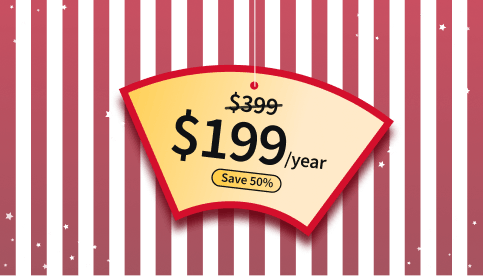Product Designer vs. UX Designer: The Difference Explained
Product designers are involved in the entire design process of a product, while UX designers focus more on the hands-on design portion of the process.
![[Featured image] A product designer wears a floral blouse and stands in an open office holding a tablet.](https://d3njjcbhbojbot.cloudfront.net/api/utilities/v1/imageproxy/https://images.ctfassets.net/wp1lcwdav1p1/32tDttnPQMUyzzMj93Nups/8d744f5f78e90400ed044d880405827c/iStock-852930228.jpg?w=1500&h=680&q=60&fit=fill&f=faces&fm=jpg&fl=progressive&auto=format%2Ccompress&dpr=1&w=1000)
Product designers and user experience (UX) designers are similar—in fact, sometimes the titles are used interchangeably. But sometimes they’re not. Broadly speaking, product designers tend to be more involved with the entirety of the design process of a product, while UX designers generally focus specifically on refining the user experience of a product.
Of course, job roles can differ from company to company. Some companies may expect their UX designers to be heavily involved in business processes or their product designers to work exclusively on design.
Read on to find out more about product designers and UX designers, their respective average salaries, and what you need to do to become either one—or both.
If you’re ready to start preparing for a role in UX design, enroll in the Google UX Design Professional Certificate. You’ll have the opportunity to learn about the UX design process and understand the basics of UX research in as little as six months. By the end, you’ll have earned a career credential that helps to prepare you for a job in the field.
Product designer vs. UX designer
At a glance, here’s a breakdown of the key characteristics of both product designers and UX designers:
| Product designer | UX designer |
|---|---|
| Generally involved in the entire design process of a product, including brainstorming, UX, project management, and business-related processes | Designs with a focus on making products pleasant to use and navigate. Generally has a more narrow focus than product designers. |
| $114,000 median total pay [1] | $109,000 median total pay [2] |
| Past experience can include UX design, leading projects, and collaborating with other teams. | Past experience can include visual or graphic design, interaction design, and UX knowledge. |
All salary information represents the median total pay from Glassdoor as of September 2025. These figures include base salary and additional pay, which may represent profit-sharing, commissions, bonuses, or other compensation.
Both product designers and UX designers rely heavily on UX tools and methods. While specific tasks might set them apart, both roles work to ensure the finished product’s user experience is smooth and intuitive. This means both should know how to use common UX tools, like Balsamiq, Sketch, Lucidchart, or design tools like Figma.
Product designers and UX designers differ in a few key ways, including:
Product designers tend to be more business-oriented: Employers may expect product designers to be more aware of business priorities than UX designers. This might manifest in working more closely with business or product teams than a typical UX designer might, and ensuring business needs are met in a finished product.
Product designers tend to take the lead: Product designers often captain the entire design process of a product. You may wrangle UX and visual designers, researchers, and business teams together to make sure all needs of a product are met. Because of this, employers typically expect you to have some experience leading projects or teams.
UX designers are more design-focused: Employers often expect UX designers to design the actual visual and interactive elements of a product. That’s not to say that product designers don’t—but as a UX designer, expect to dig a little more into the hands-on aspects of designing a user-friendly product.
What is a product designer?
Product design is the process of creating a digital or physical good. The process is generally grounded in research and involves keeping the user’s experience in mind.
Product design has in recent years become associated with digital products like software or apps. But product design can also refer to the design of physical products, like furniture, electronics, and other manufactured goods. This latter type of design is also called industrial design.

Who gets paid more, a product designer or a UX designer?
According to various salary aggregate websites, product designers tend to have slightly higher average salaries than UX designers in the US.
| Role | Glassdoor, US median total pay | Indeed, US average | Payscale, US average |
|---|---|---|---|
| UX designer | $109,000 [2] | $133,610 [3] | $81,868 [5] |
| Product designer | $114,000 [1] | $130,741 [4] | $95,393 [6] |
Here’s how similar professions compare:
Product manager: $147,000 [7]
UX researcher: $119,000 [8]
UX engineer: $142,000 [10]
Graphic designer: $64,000 [11]
UI designer: $114,000 [12]
Industrial designer: $106,000 [13]
All salary information represents the median total pay from Glassdoor as of September 2025. These figures include base salary and additional pay, which may represent profit-sharing, commissions, bonuses, or other compensation.
UX designer vs. product designer: How to become one
With the need to develop similar skill sets, the paths to UX design and product design can easily complement each other. Moving from a UX designer to a product designer can be a natural transition as you gain more experience and begin to take on more responsibilities.
If you’re just starting out in your design career, you’ll want to solidify your understanding of UX concepts and familiarize yourself with key design tools. Here's a closer look at what that means:
UX concepts and skills: User-centric thinking is critical, but UX design isn’t just a mentality. Tasks as a UX designer would also include being able to prototype, build wireframes, or map user journeys or user flows. These skills will also be foundational for your work as a product designer.
Design tools and principles: UX designers should generally be familiar with several design tools. These can include Figma, Sketch, and Adobe Creative Suite. A strong understanding of design principles—like typography and color theory—will also be an asset.
If you want to move into product design, it’ll also be useful to have the following skills:
Leading projects: Many job descriptions for product designers call for previous experience overseeing projects. This might be something you can gradually build into a current design role.
Collaboration across different teams: Product designers often work with business teams and might draw their own conclusions about best practices based on data. Having a wider understanding of a product’s importance and priorities within a company will be important.
The designer career path
Product designers and UX designers, similar as they are, are only two roles in a wide field of other similar roles. There are plenty of other roles you can consider in a design career, with each their unique differences.
Graphic designer: Graphic designers develop the visual aspects of websites, ads, and other graphical interfaces. It can be a good starting point if you have an eye for design but aren’t ready to jump into UX.
Read more: UX Design vs. Graphic Design: Choosing the Right Career Path
UX engineer: Also called a UX developer, UX engineers are responsible for programming the front end of websites and apps with an eye to UX principles. It can be a good option if coding and web development interest you.
UX researcher: If you enjoy learning about people and their behavior, UX research might be worth considering. As a UX researcher, you’ll conduct the research that UX designers use to then design a product—the surveys, interviews, and data-focused studies that reveal what’s working in a product, what’s not, and what people want.
Product management: If you’re a product designer, it's possible to pivot your career into product management. While this will distance you from the design elements of the job, if you’re intrigued by the planning, research, and collaborative aspects of product design, product management can be a role to consider.
Stay in the loop on career trends and tips
Embarking on a new career? Join Career Chat on LinkedIn to keep up with trends and career opportunities. You can also explore more about UX design and product design by checking out these free resources:
Build your knowledge: Glossary of UX Terms and Definitions
Watch on YouTube: UX Design Career Path: 5 Routes to Success
Learn more about the field: UX Career Paths: Explore Roles and Specializations
Whether you want to develop a new skill, get comfortable with an in-demand technology, or advance your abilities, keep growing with a Coursera Plus subscription. You’ll get access to over 10,000 flexible courses.
Frequently Asked Questions (FAQs)
Well-honed people skills are important to both product designers and UX designers, particularly as they are tasked with devising insightful design solutions to ensure impactful products. As a result, both product designers and UX designers must take a human-centered approach to the design process by employing such personal skills as critical thinking, empathy, collaboration, and problem-solving.
No, neither UX designers nor product designers need to know how to code. But a grasp of coding could be helpful to designers working on digital products and create a shared understanding with coders working alongside them. As positions require collaboration across different teams, knowledge of coding could be beneficial to many UX and product designers, but employers don’t typically require it.
The design process involves many stages to ensure a product offers the optimal user experience, marketability, and return on investment. Conceptual design is the earliest stage in the development process when designers ideate and begin exploring the product’s overall purpose, target demographic, interactions, and design. At this stage, the product goes through several iterations, and visual designs are often imprecise illustrations meant to simply articulate the general idea of the product. The detail design process, meanwhile, defines the precise dimensions, features, and cost estimate of the product. In this phase, the finer details of the product are fully articulated, and visual designs are more precise 2D or 3D models that give a clearer view of the final product.
Article sources
Glassdoor. “How Much Does a Product Designer Make?, https://www.glassdoor.com/Salaries/product-designer-salary-SRCH_KO0,16.htm.” Accessed September 17, 2025.
Glassdoor. “How Much Does a UX Designer Make?, https://www.glassdoor.com/Salaries/united-states-ux-designer-salary-SRCH_IL.0,13_IN1_KO14,25.htm.” Accessed September 17, 2025.
Indeed. “User Experience Designer Salary in United States, https://www.indeed.com/career/user-experience-designer/salaries.” Accessed September 17, 2025.
Indeed. “Product Designer Salary in United States, https://www.indeed.com/career/product-designer/salaries?from=top_sb.” Accessed September 17, 2025.
Payscale. “Average UX Designer Salary, https://www.payscale.com/research/US/Job=UX_Designer/Salary.” Accessed September 17, 2025.
Payscale. “Average Product Designer Salary, https://www.payscale.com/research/US/Job=Product_Designer/Salary.” Accessed September 17, 2025.
Glassdoor. “How Much Does a Product Manager Make?, https://www.glassdoor.com/Salaries/united-states-product-manager-salary-SRCH_IL.0,13_IN1_KO14,29.htm.” Accessed September 17, 2025.
Glassdoor. “How Much Does a UX Researcher Make?, https://www.glassdoor.com/Salaries/united-states-ux-researcher-salary-SRCH_IL.0,13_IN1_KO14,27.htm.” Accessed September 17, 2025.
Glassdoor. “How Much Does a UX Writer Make?, https://www.glassdoor.com/Salaries/united-states-ux-writer-salary-SRCH_IL.0,13_IN1_KO14,23.htm.” Accessed September 17, 2025.
Glassdoor. “How Much Does a UX Engineer Make?, https://www.glassdoor.com/Salaries/united-states-ux-engineer-salary-SRCH_IL.0,13_IN1_KO14,25.htm.” Accessed September 17, 2025.
Glassdoor. “How Much Does a Graphic Designer Make?, https://www.glassdoor.com/Salaries/united-states-graphic-designer-salary-SRCH_IL.0,13_IN1_KO14,30.htm.” Accessed September 17, 2025.
Glassdoor. “How Much Does a UI Designer Make?, https://www.glassdoor.com/Salaries/us-ui-designer-salary-SRCH_IL.0,2_IN1_KO3,14.htm.” Accessed September 17, 2025.
Glassdoor. “How Much Does an Industrial Designer Make?, https://www.glassdoor.com/Salaries/us-industrial-designer-salary-SRCH_IL.0,2_IN1_KO3,22.htm.” Accessed September 17, 2025.
Coursera Staff
Editorial Team
Coursera’s editorial team is comprised of highly experienced professional editors, writers, and fact...
This content has been made available for informational purposes only. Learners are advised to conduct additional research to ensure that courses and other credentials pursued meet their personal, professional, and financial goals.



